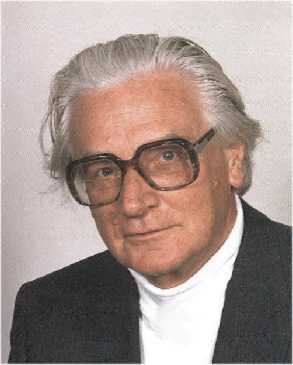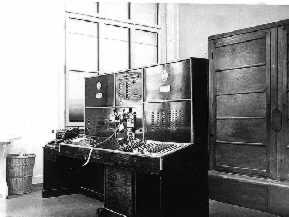| Konrad Zuse Born On This Day In 1910 |
| Sunday, 22 June 2025 | |||
|
Today marks the 115th anniversary of Konrad Zuse. Although his name may not be familiar in English-speaking circles, in Germany he is known as "der Vater des Computers". He does indeed have a strong claim to having invented the very first working computer. Konrad Ernst Otto Zuse Konrad Zuse was born in Berlin shortly before World War I. His father, a postal administrator, and mother must have been very tolerant because they not only put up with Konrad's experiments, they actually helped fund them. From a very early age he was interested in automaton and he built a chocolate dispensing machine from the German equivalent of Meccano which even gave the right change! At the age of 18 he enrolled as a student of architecture and civil engineering at the University of Berlin, and discovered his dislike of routine calculation. At the time engineers knew how to work out problems such as whether or not a static structure such as roof would stand up, but this involved solving lots of simultaneous linear equations. The only way of doing this was the hard way, manual calculations. Solving the equations for a real structure could take months and Zuse thought that this was a terrible waste of time and very boring. His mind turned to ways of automating the calculation. You could say that he decided to invent the computer rather than do the calculations himself! The story of why and how Zuse designed his first three computers is the topic of this video posted on You Tube by the Computer History Archives Project ("CHAP"). It is an excerpt from "The Machine that Changed the World," a 5-episode television series on the history of electronic digital computers from WGBH which aired in 1992 and includes conversations with Zuse himself: Zuse originally called his first computer V1, "V" for Versuchsmodell or "Experimental model". Later renamed the Z1 (Zuse1), it was fully mechanical, relying on hundreds of switches. Rather than decimal to represent numbers, Zuse opted for binary easily represented by two positions of a switch. Its "memory" consisted of one thousand thin slotted metal plates and input was via a tape reader that used old 35mm film stock rather than paper It also had a keyboard and showed its results via a row of lights. Zuse built it in 1936 which puts it well before the other well-known attempts at building a computer.
The Z1 in living room of his parents home where it was built In the next model, the Z2, the mechanical switches were replaced by electro-mechanical switches - relays. This is the earliest known use of relays in a computer. However the memory remained mechanical and while the Z2 was faster, it still wasn't reliable. On seeing the design for the next model, the Z3, Helmut Schreyer, a friend of Zuse and himelf an engineer, suggested that the use of vaccuum tubes, electronic valves, in place of relays. This would speed calculations by a factor of 1000. They applied for funds from the Nazi regime but when they admitted it would take them up to two years to build it the requested was turned down - Hitler had decided that no long-term projects should be undertaken during a war he expected to win in less than two years. Zuse went ahead anyway, using 2,300 relays. Completed in 1941 the Z3 worked and was the first programmable, fully automatic digital computer. For more about it see this report. The final model in the series, the Z4 was financed by the German Air Ministry to continue the work in designing airframes and wings. It was partially electronic and at last achieved a reasonable speed of calculation - 3 seconds per multiply. During the the closing stages of World War II Zuse's machines were destroyed by bombing - all except the Z4 which, in the company of Werner Von Braun and his fellow rocket scientists, Zuse transported south with the idea was that it was better to be captured by the Americans than the Russians.
The Z4 eventually found its way to the Technische Hochschule in Zurich where Zuse was living in 1950. It was used for some years and represented the only significant computer on the European mainland. Zuse set up a company in 1949, Zuse KG, which grew to employing 1000 people building specialist scientific computers. He stayed with the company until 1966 when he retired to a little consulting and a lot of painting - his lifelong hobby. The company was eventually taken over by Siemens. Zuse is also remembered for Plankalkül or "Plan Calculus" an algorithmic general purpose language for computation, but as with his computers, the authorities who might have put his inventions to greater use, tended to ignore it. Throughout his life Zuse worked independently and virtually unsupported. This makes his achievement all the more amazing. Photo Credit: Computer History Museum Related articles:Konrad Zuse and Z1, The First Working Computer
|
|||
| Last Updated ( Sunday, 22 June 2025 ) |



 The Z4 in Zurich
The Z4 in Zurich
